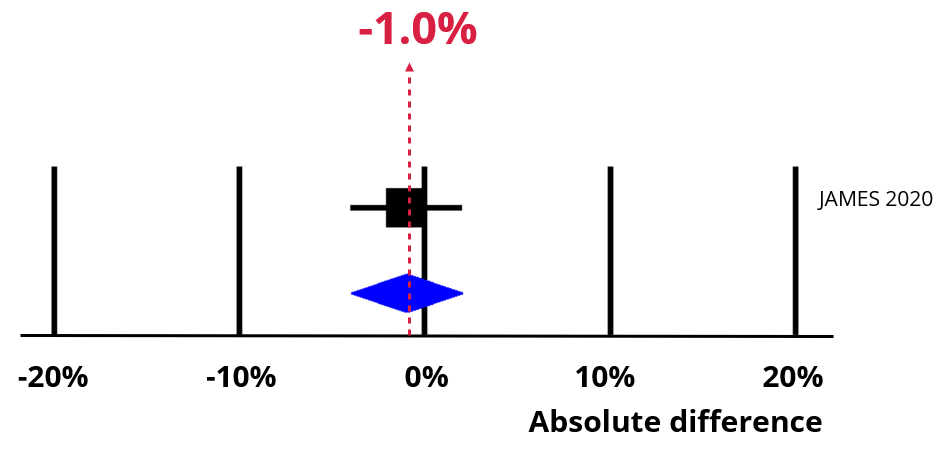A social incentive such as a personalised table of questionnaire response to date to evidence previous responses noted and valued are included in the cover letter.
Including a social incentive in the cover letter may result in little or no difference to retention.
An increase of -1% (95% confidence interval = -4% to 2%).
GRADE Low certainty.
We recommend that trialists include a social incentive in cover letters in the context of an intervention evaluation.
See Resource bundle below for details on how to use social incentives.
Imagine initial retention is 65% of those approached. You have a trial with 100 participants that needs responses from 80 to meet its statistical power calculations. Retention of 65% means that you will be 15 responses short (see chart below).

Now imagine using a social incentive. The chart below shows the impact of an absolute increase of -1% (95% CI = -4% to 2%). Retention is now 64%, which means our best estimate is that you would now be 14 responses short.


Trial Forge will make trials more efficient by looking for marginal gains across all trial processes, from research question to implementation into routine care. It will encourage everyone connected with trials to be more sceptical of what we do by asking for the evidence behind all of our trial decisions.